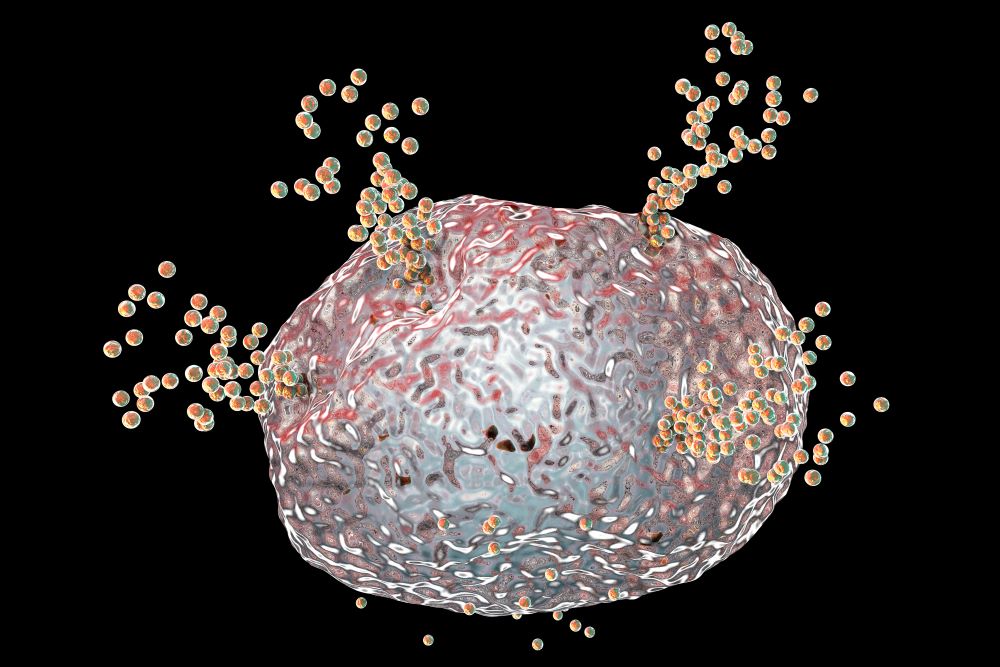Now live! RTHM Direct – simplified medication access for Long COVID, ME/CFS and related conditions. Check it out
As the SARS-CoV-2 virus began to take hold across the world, children seemed to be spared from severe infection and complications. However, we learned that children could be severely affected by COVID-19 and that COVID could have long-term effects. We also see that children are vulnerable to the long-lasting effects of the virus and the development of Long COVID. At a time when the body is still developing, pediatric Long COVID takes over, leaving many children unable to perform simple tasks and making it impossible to participate in their normal childhood routine. But why does one child get Long COVID while another does not? How prevalent is Long COVID in children? What can children with Long COVID expect? Is Long COVID the only post-acute sequelae seen in children?
COVID-19 and Children
When the SARS-CoV-2 virus first began to take hold across the world, children and adolescents seemed to be less affected. This left the focus on adults and those more vulnerable within the community. However, with the emergence of the Delta and Omicron variants, and the fact that children are only now eligible for vaccinations, pediatric cases of COVID-19 are on the rise.
In fact, even though children under the age of 18 only make up 22.2% of the population, we are seeing 23.6% of the current COVID-19 cases in children. This means that right now, children are slightly more likely to contract COVID than the average adult. While COVID-19 in children is often mild or without any symptoms at all, we are seeing an increase in more severe disease and pediatric hospitalizations. In addition, we are learning that children and adolescents are still at risk for long-term complications, such as MIS-C and Long COVID.
What is Multisystem Inflammatory Syndrome (MIS-C)?
Multisystem inflammatory syndrome (MIS-C) is a hyperactivation of the body’s immune system. This hyperactivation results in widespread inflammation that can affect vital organs, such as the heart, lungs, kidneys, brain, eyes, skin, and gastrointestinal tract. MIS-C develops within a few weeks after the initial COVID infection resolves. This potentially serious and life-threatening condition is a rare post-infectious complication of COVID and one way in which Long COVID may manifest in children.
Symptoms of MIS-C typically start suddenly, within three to four weeks after COVID recovery or an asymptomatic COVID-positive case. Symptoms vary from child to child. They often begin with a high and persistent fever and symptoms often seen in toxic shock syndrome or Kawasaki disease. These symptoms can include:
- Difficulty breathing
- Shortness of breath
- Persistent cough
- Dizziness or lightheadedness
- High heart rate
- Irregular heartbeat
- Low blood pressure
- Clammy skin
- Rashes
- Bloodshot eyes
- Swelling of the extremities
- Inflamed mucous membranes
- Cracked lips
- Tongue swelling and “strawberry” color
- Diarrhea, vomiting, and/or abdominal pain
- Headache
- Neck pain
- Brain fog (confusion and memory problems)
- Numbness/tingling in the hands and feet
- Seizures
If you suspect your child may have MIS-C, seek medical attention immediately. MIS-C requires regular monitoring and most often requires hospitalization and the regular care of pediatric specialists, including cardiology. Treatments for MIS-C often include IV immunoglobulin and anti-inflammatory drugs, as well as treatments to reduce the risk of blood clots. Regular heart monitoring is often necessary even after initial MIS-C recovery and may continue for at least six months.
There is promising news however in regards to vaccines and MIS-C. A preliminary report released on January 7, 2022, shows that two doses of the Pfizer-BioNTech vaccine are 91% effective in preventing MIS-C in children between the ages of 12-18 years of age.
What is Pediatric Long COVID?
Long COVID, or post-acute sequelae of SARS-CoV-2 (PASC), is a continuing of COVID symptoms or the development of new symptoms that last months after the initial SARS-CoV-2 infection. While there are many different theories as to the cause of Long COVID, researchers are still looking for a direct cause. However, the pandemic is not the first time we have seen infection-associated disease.
Currently, there is little correlation between initial COVID severity and the development of Long COVID. In fact, many adults and children present with Long COVID symptoms weeks after an asymptomatic COVID case. While children can experience the same symptoms of Long COVID seen in adults, the most common pediatric symptoms include:
- Gastrointestinal issues
- Chest pain
- Headaches
- Fatigue
- Joint/muscle pain and weakness
- Sore throat
- Dizziness
- Rashes
- Mood changes
- Nausea
For many children with Long COVID, life changes greatly. Previously active children are left unable to perform simple daily tasks. They find that minimal physical or mental exertion leaves them with severe fatigue or malaise (known as post-exertional malaise, or PEM). They experience severe brain fog (problems with concentration and memory), muscle weakness, and trouble with movement. In many cases, they develop comorbidities, such as POTS or ME/CFS. Previously energetic children must now take scheduled rests and pace themselves. Many children and families are still suffering from symptoms a year or more after initial SARS-CoV-2 infection.
The Prevalence of Pediatric Long COVID and Future Research
Because children seemed to have minimal risk of COVID-19, research into COVID and Long COVID focused on adults and vulnerable populations. In addition, pediatric research is often more difficult to accomplish. However, an initial pediatric Long COVID study shows as many as 1 in 7 children positive with SARS-CoV-2 can go on to experience Long COVID three or more months after initial infection, with many experiencing symptoms for over a year or more. Another study reports that more than half of the children in the study experienced at least one lingering symptom 120 days post-COVID infection.
In order to better understand Long COVID and the potential long-term consequences of COVID in children, NIH’s National Institute of Allergy and Infectious Diseases (NIAID) and the Researching COVID to Enhance Recovery (RECOVER) Institute have launched a long-term study of up to 1000 children, following them over the next three years.
“Although we know that children are vulnerable to COVID-19, we still do not have a clear picture of how COVID-19 affects them in the long term. In adult patients, the long-term sequelae of COVID, including post-acute COVID-19, can significantly affect quality of life. Our investigations into the pediatric population will deepen our understanding of the public health impact that the pandemic has had and will continue to have in the months and years to come.”
NIAID Director Anthony S. Fauci, M.D.
Comorbidities in Pediatric Long COVID
As we mentioned above, it is common for comorbidities to occur with Long COVID. Specifically, the common comorbidities include postural orthostatic tachycardia syndrome (POTS), myalgic encephalomyelitis/chronic fatigue syndrome (ME/CFS), and mast cell activation syndrome (MCAS). In fact, research shows that POTS may occur in 25-50% of all Long COVID patients. This includes pediatric patients, though it is more commonly seen in adolescents. Other researchers have found that the SARS-CoV-2 virus, similar to SARS-CoV-1, is triggering ME/CFS and the same persistent fatigue and impaired daily physical and cognitive function.
Treatment for Long COVID in Children and Teens
There is currently no cure for Long COVID or the comorbidities your child may experience. The goal of any treatment plan is to address and manage symptoms in order to optimize the child’s functionality and quality of life. Because Long COVID is a multisystem disease, care requires a coordinated effort between different specialists, such as neurologists, cardiologists, pulmonologists, psychologists, and nutritionists. Specialized Long COVID clinics, such as RTHM, offer this coordinated care, making your child’s treatment easier and more comprehensive. In addition, the physicians at RTHM specialize in Long COVID treatments, meaning they are staying up to date on new developments in the SARS-CoV-2 pandemic and Long COVID research. This allows them to better understand their Long COVID patients and provide cutting-edge treatment solutions.
Children Living with Long COVID and the Necessary Adjustments
The COVID pandemic has already been difficult on children. With the loss of family members, the closing and reopening of schools, the multiple changes to their normal routines, and feelings of isolation, the last couple of years have put a toll on this generation in a way that we have yet to fully understand.
However, children with Long COVID face a whole new set of challenges. Severe fatigue and post-exertional malaise can make a regular school schedule impossible to manage. Cognitive symptoms, such as memory and comprehension issues, can make focusing and learning beyond their ability at this time. And, unfortunately, we don’t know how long these symptoms and disabling conditions may last. While treatment may help, children with Long COVID will still face many challenges.
The federal government declared Long COVID a disability, so teachers and school districts are able to offer children modifications based on their needs.
“Long COVID is an emerging issue that may affect many children (and educators) across the country. Early intervention and local educational agencies need to ensure that children who are living with impaired development or health due to long COVID that is a disability are identified and are provided the appropriate services and supports covered under IDEA.”
—Katherine Neas, Acting Assistant Secretary for the Office of Special Education and Rehabilitative Services
What Can Children and Teens Expect When It Comes to Their Long COVID Outcome?
Currently, it is impossible to predict a recovery timeline when it comes to Long COVID for children and adults. While some children may recover quickly, others are still battling symptoms over 1.5 years after their initial infection. At RTHM, our goal is to provide all our patients with a comprehensive healthcare plan that helps reduce and manage symptoms to improve their quality of life. Through research, we hope to gain a better understanding of Long COVID and new treatment options, with the eventual goal of finding a cure.

Get updates
Join our mailing list



